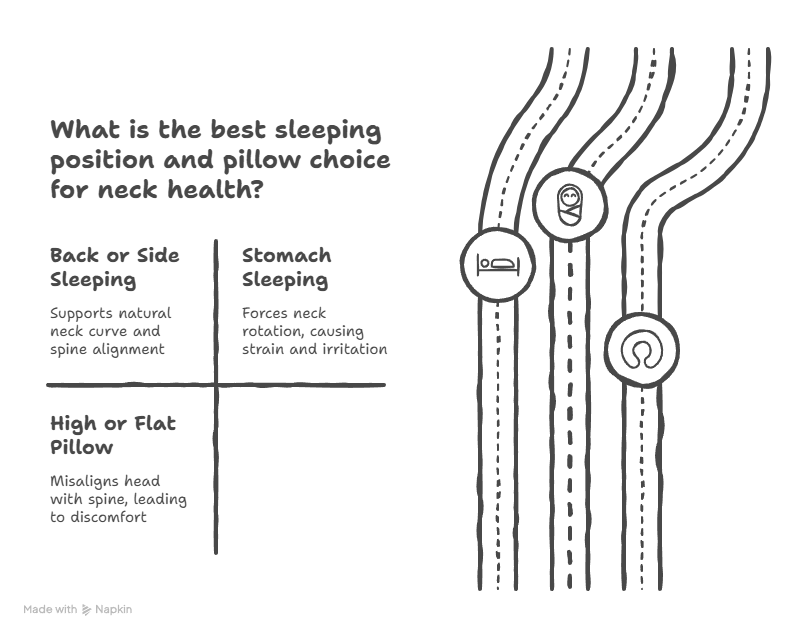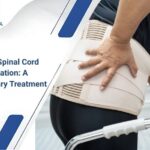If you’ve been diagnosed with Degenerative Disc Disease (DDD) in your neck—a condition often marked by persistent stiffness, nagging pain, or discomfort that travels down your arm—you know that managing it is a daily commitment. The key to living well with cervical DDD isn’t necessarily found in a magic pill or a complex surgery; rather, it often lies in consciously and consistently avoiding the triggers that inflame your condition.
The most effective, long-term solution to maintaining a healthy spine is understanding the precise things to avoid with degenerative disc disease in neck. By eliminating these detrimental forces and poor habits, you give your worn discs and fatigued muscles the best chance to stabilize, minimize irritation, and prevent painful flare-ups. This proactive approach, guided by specialist knowledge, is the true foundation of better spine health.
Understanding Cervical DDD: Why Avoidance Matters
Degenerative Disc Disease is an age-related process where the rubbery discs between your cervical vertebrae begin to lose water content and height. They dry out, shrink, and become less flexible, losing their ability to act as proper shock absorbers. This shrinkage can cause the bony vertebrae to rub together or, worse, lead to the formation of bone spurs (osteophytes) that can compress nearby nerve roots or the spinal cord itself (cervical spondylosis).
Since the root issue—disc degeneration—cannot be reversed, your primary goal is to minimize the stress, compression, and shear forces that worsen the existing condition and accelerate its progression. Knowing the things to avoid with degenerative disc disease in neck is fundamentally about practicing daily spine hygiene.
Things to Avoid With Degenerative Disc Disease in Neck
For a comprehensive management plan, you must analyze and correct habits across three major areas: posture and ergonomics, physical activities, and lifestyle choices.
Category 1: Postural and Ergonomic Stressors
The most damage to the cervical spine often comes not from sudden injury, but from sustained, low-level stress caused by poor posture.
1. Avoiding Prolonged Forward Head Posture (“Text Neck”)
This is perhaps the single most important entry in the list of things to avoid with degenerative disc disease in neck. When your head is balanced directly over your shoulders, it weighs about 10–12 pounds. However, when you tilt your head forward by just 15 degrees (the typical position for reading a phone or tablet), the effective weight your cervical discs must support jumps to around 27 pounds. At 60 degrees, the force can be over 60 pounds.
- Why It Harms: This excessive forward leverage places enormous stress on the posterior elements of the neck—the facet joints, the ligaments, and the rear annulus of the disc, which is already weakened in DDD. Sustained forward flexion stretches the ligaments and strains the muscles, which leads to fatigue, spasm, and chronic inflammation that accelerates disc breakdown.
- The Fix: Always bring your device or reading material up to eye level. Ensure your computer monitor is positioned so the top third of the screen is at your eye line, allowing your neck to stay in a neutral, relaxed position. Use a headset for long phone calls to keep your hands free.
2. Avoiding Poor Sleeping Positions and Pillow Choices

Your sleeping posture is a major contributor to how much restorative time your neck gets. An entire third of your life is spent sleeping, and doing so improperly can negate all your efforts during the day.
- Why It Harms: Sleeping on your stomach forces your neck to rotate fully to one side for hours, twisting the cervical spine’s joints and ligaments and potentially irritating nerve roots. Using a pillow that is too high or too flat forces your head out of alignment with your spine (either too flexed or hyperextended).
- The Fix: The ideal sleeping posture is on your back or side, using a specialized cervical pillow (such as a memory foam contour pillow) that supports the natural curve of your neck, keeping your head level with your spine.
3. Avoiding Prolonged Static Positions Without Breaks
Whether you are working at a desk, driving, or sitting on the couch, staying locked in one position for more than 30–45 minutes is detrimental to disc health.
- Why It Harms: Spinal discs, being largely avascular (lacking their own blood supply), rely on movement to pump fluids and nutrients in and waste out—a process called imbibition. Prolonged static loading starves the discs of hydration and oxygen, accelerating their dehydration and degeneration.
- The Fix: Set a timer. Every 30 minutes, stand up, walk around, and perform gentle neck and shoulder shrugs and retraction exercises (pulling your chin straight back). This brief movement is critical for disc nutrition and muscle relief.
4. Avoiding Cradling the Phone
Cradling a telephone receiver between your shoulder and ear is a classic example of a detrimental habit.
- Why It Harms: This action forces your neck into lateral flexion combined with rotation, severely pinching and compressing the joints on the side of the neck. For someone with DDD, this can cause an immediate and intense nerve root irritation (cervical radiculopathy).
- The Fix: Always use a headset, speakerphone, or earbuds.
Category 2: Activities and Movements to Restrict or Modify
High-impact forces and poor technique during exercise are critical things to avoid with degenerative disc disease in neck.
Struggling with Neck Pain Due to Degenerative Disc Disease?
Learn what to avoid and how to protect your spine for lasting relief. Consult Dr. Arun Saroha, one of India’s leading spine specialists with 25+ years of experience in treating cervical spine disorders using advanced techniques and personalized care.
Consult a Spine Expert Today1. Avoiding High-Impact Activities and Sports
While exercise is essential for spine health, jarring, repetitive impacts are highly damaging to already compromised discs.
- Why It Harms: Activities like long-distance running on concrete, jumping rope, gymnastics, or contact sports (football, boxing) generate significant axial load. This force is transmitted up the kinetic chain directly into the cervical spine, compressing and damaging the worn discs and inflamed facet joints.
- The Fix: Switch to low-impact, high-benefit alternatives like swimming (especially the backstroke, which puts the neck in a neutral or slightly extended position), cycling (with proper handlebar height), or using an elliptical machine.
2. Avoiding Heavy Overhead Weightlifting
Certain strength training exercises place disproportionate stress on the cervical spine.
- Why It Harms: Exercises such as military presses, overhead squats, and even heavy bench presses require the cervical muscles to brace the head against a heavy, unstable load. This greatly increases the compressive force on the cervical discs, potentially leading to disc bulge or herniation.
- The Fix: Focus on light weights and high repetitions. Opt for resistance training machines that provide external stabilization. Replace overhead presses with lateral raises, front raises, or rowing exercises that focus on the shoulder blades and upper back strength, which are essential for supporting the cervical spine.
3. Avoiding Excessive or Uncontrolled Neck Movements (Whiplash Motions)
Sudden, forceful movements, particularly neck manipulations, are a major things to avoid with degenerative disc disease in neck.
- Why It Harms: Quick rotations, rapid side bending, or sudden stretching motions can shear the discs and overload the spinal ligaments, leading to instability or acute nerve root compression. In an already degenerative spine, the body has a narrow tolerance for these types of forces.
- The Fix: All neck movements, especially during stretching or physical therapy, should be slow, controlled, and within a pain-free range of motion. Never allow your neck to snap or suddenly move beyond its natural limit.
Category 3: Lifestyle Choices That Starve the Discs
The health of your discs is intrinsically linked to your overall systemic health. Lifestyle factors can starve the discs of the nutrients they need to remain pliable.
1. Avoiding Smoking and Nicotine Use
This is perhaps the most dangerous lifestyle choice for anyone managing DDD.
- Why It Harms: Nicotine is a potent vasoconstrictor, meaning it causes blood vessels to narrow. This reduces blood flow throughout the body, critically restricting the supply of oxygen and nutrients to the spinal discs. Discs already struggle to get nutrients; smoking accelerates their desiccation (drying out) and breakdown, rapidly progressing the DDD.
- The Fix: Quit smoking completely. This single action is arguably the most powerful way to slow the progression of DDD and improve your life expectancy after stroke at 80 if applicable.
2. Avoiding Chronic Dehydration
The nucleus pulposus (the gelatinous center of the disc) is composed of up to 80% water when you are young. Maintaining this hydration is key to maintaining disc height and cushioning.
- Why It Harms: Chronic under-hydration reduces the water content of the discs, accelerating the desiccation that defines DDD. A dehydrated disc is a stiffer, shorter disc, increasing friction and compression.
- The Fix: Commit to drinking adequate water throughout the day. Your spine health depends on it.
3. Avoiding Unmanaged Chronic Inflammation
Poor diet and unmanaged weight contribute to systemic inflammation, which is detrimental to all tissues, including the discs and cartilage.
- Why It Harms: Excess body weight increases the overall axial load on the spine. Furthermore, a diet high in processed foods, sugars, and unhealthy fats contributes to chronic, low-grade inflammation throughout the body, which damages cartilage and impedes tissue repair.
- The Fix: Adopt an anti-inflammatory diet rich in lean proteins, fruits, vegetables, and healthy fats (like Omega-3s). Maintain a healthy body weight to reduce overall gravitational load on the cervical spine.
The Proactive Path: What You Should Be Doing
Once you have mastered the things to avoid with degenerative disc disease in neck, your focus should shift to building resilience. The best offense is a good defense:
- Strengthen Your Core and Upper Back: The muscles that retract your shoulder blades (rhomboids and middle trapezius) and the deep neck flexors are crucial for holding your head in a healthy, neutral position. Strong muscles act as a natural brace, offloading the pressure on the discs.
- Gentle, Controlled Stretching: Perform slow, gentle range-of-motion exercises prescribed by a physical therapist. Neck retractions (chin tucks) are especially beneficial for strengthening the deep neck muscles.
- Seek Expert Guidance: A specialist can diagnose the exact structural issue (e.g., nerve root impingement, facet joint arthritis) and tailor your things to avoid list and your things to do list precisely to your condition.
When managing a chronic and progressive condition like cervical DDD, expert guidance is invaluable. Dr. Arun Saroha is a highly respected neurosurgeon with deep expertise in degenerative spine disorders. His focus is not only on surgical intervention for severe cases but also on comprehensive, personalized management plans that empower patients to take control of their spine health through education and lifestyle modification. Consulting with an expert like Dr. Arun Saroha ensures you receive the most accurate diagnosis and the most effective long-term strategies.
Struggling with Neck Pain Due to Degenerative Disc Disease?
Learn what to avoid and how to protect your spine for lasting relief. Consult Dr. Arun Saroha, one of India’s leading spine specialists with 25+ years of experience in treating cervical spine disorders using advanced techniques and personalized care.
Consult a Spine Expert TodayFrequently Asked Questions (FAQs)
Can I still exercise if I have DDD in my neck?
Yes, absolutely. Exercise is crucial, but you must focus on low-impact, non-jarring activities. Good options include walking, swimming, cycling, and strengthening the deep core and upper back muscles to stabilize the spine.
Are chiropractic adjustments or neck cracking safe with cervical DDD?
It is generally advisable to exercise extreme caution with chiropractic manipulation or any forceful movements of the neck. Since DDD involves disc thinning and potential instability, forceful adjustments can increase the risk of injury, nerve irritation, or soft tissue damage. Always consult your spine specialist first.
Should I wear a soft neck collar to support my neck?
Soft neck collars should only be used temporarily and under a doctor’s recommendation, often during an acute flare-up. Long-term use is a major things to avoid with degenerative disc disease in neck because it leads to muscle weakness, which further destabilizes the cervical spine and makes the condition worse over time.
Is sitting better than standing for my neck pain?
Neither is inherently better if done for too long. The best posture is the next posture. The key things to avoid with degenerative disc disease in neck is staying in any static position. Use an ergonomic setup (whether sitting or standing) and take frequent movement breaks to keep the discs hydrated.
Can certain foods make my neck pain worse?
Yes. A diet high in inflammatory agents (refined sugars, saturated fats, processed carbohydrates) can contribute to systemic inflammation, which aggravates pain and joint health. An anti-inflammatory diet (rich in fish, vegetables, and whole foods) is recommended for better disc health.
Will DDD in my neck inevitably require surgery?
No. The vast majority of people with cervical Degenerative Disc Disease manage their symptoms successfully with conservative, non-surgical methods. Surgery is typically reserved for cases where pain is unmanageable or, more critically, where there is clear evidence of progressive nerve root or spinal cord compression










